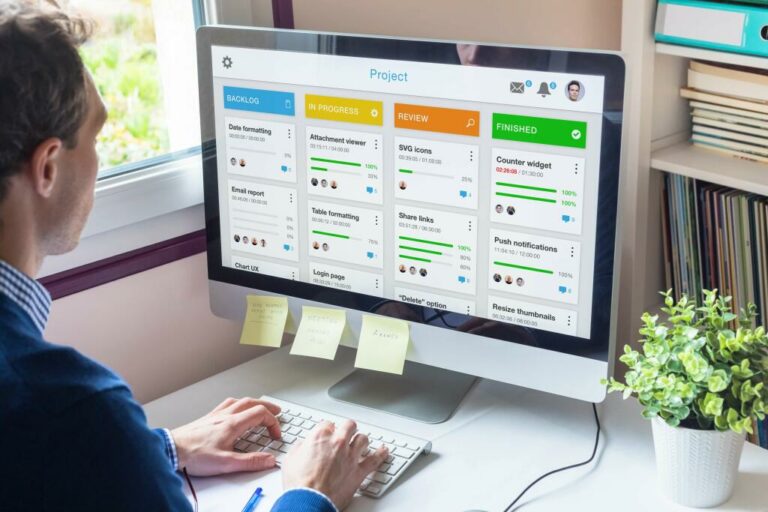Reporting and analytics for legacy systems typically require involvement from a third-party vendor to generate operational business intelligence. Using cloud applications from your legacy ERP vendor often produces the same or better intelligence without needing an additional vendor relationship. enterprise systems definition ERP systems will also provide transparency into your complete business process by tracking all aspects of production, logistics, and financials. These integrated systems act as a business’s central hub for end-to-end workflow and data, allowing a variety of departments to access.
- Within an ERP system, the integrated software modules, such as sales, quality management and accounts receivable, communicate and share data.
- ERP systems usually fail to achieve the objectives that influenced their installation because of a company’s reluctance to abandon old working processes.
- In ERP, these modules are interconnected with the ability to distribute information.
- As mentioned, cloud options significantly reduce both capital and operating costs – improving both ROI and TCO.
With the help of enterprise resource planning systems, information can flow seamlessly across the firm. Also, different business processes from sales, production, manufacturing, logistics, and human resources can be integrated into organization-wide business processes. See the industry-leading enterprise resource planning (ERP) cloud solution, serving as your integrated management of business processes and applications, to gain resilience and real-time agility, to position yourself for growth. Enterprise resource planning, supply chain management, and customer relationship management systems are examples of enterprise systems. Businesses implement Enterprise Resource Planning (ERP) to integrate procurement, finance, accounting, marketing, and human resources processes.
What is Enterprise System (ERP)?
This solution helps in the effective optimization of all promotion activities. Thanks to it, companies can launch efficient campaigns, improve their content and provide multichannel support to their clients. For optimization of all the processes, they enjoy great benefits from using CRM. Organizations use CRM for gathering details of their clientele, decrease the time employees spend on routine tasks, grow their businesses. Next-generation technologies, like artificial intelligence (AI), help cloud-based systems rapidly improve their capabilities with no need for periodic updates, unlike your legacy system.

Enterprise resource planning (ERP) is a platform companies use to manage and integrate the essential parts of their businesses. Many ERP software applications are critical to companies because they help them implement resource planning by integrating all the processes needed to run their companies with a single system. With ERP integration, companies can gain a unified view of information from different systems, increase business process efficiency, improve customer experiences, and facilitate collaboration across teams and business partners. Each type of enterprise application can be considered a “system” due to the integration with a firm’s business processes.[6] Categories of enterprise software may overlap due to this systemic interpretation.
Technology planning
No company that continues to rely purely with on-premises technology will be able to recruit top talent, regardless of age. Since data is the lifeblood of every modern company, ERP makes it easier to collect, organize, analyze, and distribute this information to every individual and system that needs it to best fulfill their role and responsibility. The choice of operating system combined with the hardware platform determines which ready-made applications can be purchased to work on it. Operating systems are the master control programs that run the computer system.

However, moving to an ERP system will be counterproductive if the company’s culture does not adjust to the change and the company does not review how the structure of its organization can support it. Some businesses benefit from enhanced real-time data reporting from a single source system. Accurate and complete reporting help companies adequately plan, budget, forecast, and communicate the state of operations to the organization and interested parties, such as shareholders. Businesses employ enterprise resource planning (ERP) for various reasons, such as expanding, reducing costs, and improving operations. The benefits sought and realized between companies may differ; however, some are worth noting.
What is enterprise document management (EDM)?
Companies can adjust the ERP system to respond to the needs of different industries such as healthcare, retail, finance, law, architecture, hospitality, etc. Within a given sector, it is possible to customize ERP to create account payables, reports and timesheets to facilitate routine tasks in the organization. Thanks to advanced data analytics tools, it is possible to optimize resource allocation and energy consumption. Pipedrive is a CRM enhanced with rich features to improve work of marketers and business development managers. It helps track customer communication with the help of a clear and transparent display of all ongoing company processes.
For any organization with a complex structure, be it a large corporation, educational institution or government department, proper software is essential. There are different types of enterprise systems that ensure stable operational flow and make the management of assets easier. In some domains a team can be called a program (e.g., a customer support team is their customer relationship “program”).
Operation support
An enterprise information system (EIS) is any kind of information system which improves the functions of an enterprise business processes by integration. This means typically offering high quality of service, dealing with large volumes of data and capable of supporting some large and possibly complex organization or enterprise. Frequently the term is used only to refer to very large organizations such as multi-national companies or public sector organizations. However, the term may be used to mean virtually anything, by virtue of it having become the latest corporate-speak buzzword. Enterprise information systems provide a technological platform that enables organizations to integrate and coordinate their business processes on a robust foundation. An EIS is currently used in conjunction with customer relationship management and supply chain management systems to automate business processes.
Thus, to obtain the maximum benefit from enterprise resource planning software, the organizations should change their way of working according to the business processes of software instead of customizing the software. Initially, ERP software was designed for automating a firm’s internal ‘back-office business processes, but now, it can also communicate with customers, suppliers, and other business partners. Enterprise resource planning software offers single-system solutions that integrate processes across the business. These applications allow users to interact within a single interface, share information, and enable cross-functional collaboration.
Enterprise system
Most EMS solutions will include core business functions like financial processing, HR management, Customer Relationship Management (CRM), budgeting, sales activity and logistics and supply chain management. Most EMS tools are presented as a single package, but can also be bespoke systems created around an organisation’s specific needs. Technologies and tools such as process automation, project management software, artificial intelligence (AI), data analytics, and machine learning (ML) make collaboration between teams easier and deliver actionable insights. Digital systems help organizations increase the efficiency of their activities, control the work of different departments better, share knowledge and enhance transparency in business processes. Enterprise software development offers great benefits to the regular workflow and elevates its productivity. With access to these new technologies, organizations can quickly improve their business best practices as the ERP software evolves.
It was difficult for the managers to assemble the data fragmented into separate systems in order to present an overall picture of the organization’s operations and take firm-wide decisions. Earlier, in large organizations, different information systems were used to serve different business functions like sales, marketing, production, manufacturing, etc., separately. Small scale organizations implement the framework of enterprise system to pick up far reaching access to business learning, increase worker profitability and minimize the duplication of organization information. Enterprise systems might likewise empower a business to diminish the expense of information technology and minimize the manual input of information. These enterprise system characteristics offer specific advantages, for example, the backing of cooperation, an enhanced response to the marketplace, expanded work quality and increased worker collaboration and effectiveness. ERP systems promote the free flow of communication and sharing of knowledge across an organization, the integration of systems for improved productivity and efficiencies, and increased synergies across teams and departments.
The Type of Information in a Customer Relationship Management System
An Enterprise Document Management system may sometime be a subcategory of an Enterprise Content Management strategy. While implementing EDM measures, you must regularly review and update security protocols to protect sensitive information from unauthorized access. Version control functionalities also ensure that the latest document versions are always accessible. ” The Conceptual Model for Enterprise Architecture was presented to Information Security Officers at a Bank who confirmed the the importance of all the main issues proposed in the conceptual model. The next generation of young workers have grown up with seamless technology that is mobile, easy to use, and always-on.